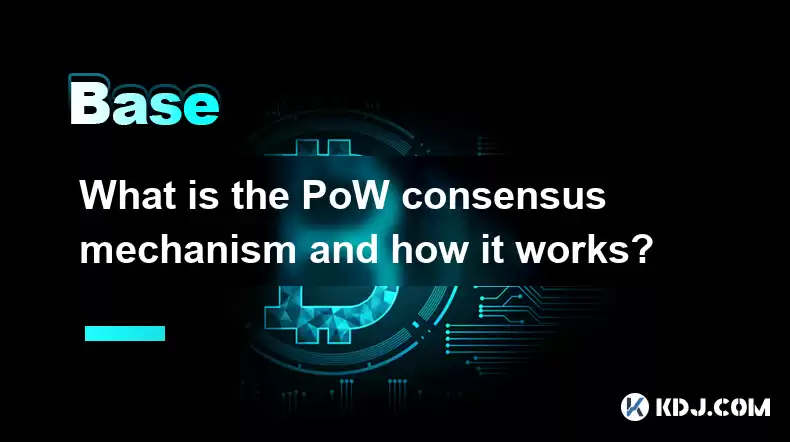-
 Bitcoin
Bitcoin $113900
-1.39% -
 Ethereum
Ethereum $3517
-4.15% -
 XRP
XRP $3.009
1.59% -
 Tether USDt
Tether USDt $0.9997
-0.04% -
 BNB
BNB $766.8
-1.41% -
 Solana
Solana $164.6
-2.38% -
 USDC
USDC $0.9998
-0.02% -
 TRON
TRON $0.3277
0.65% -
 Dogecoin
Dogecoin $0.2023
-1.67% -
 Cardano
Cardano $0.7246
0.05% -
 Hyperliquid
Hyperliquid $38.27
-4.77% -
 Sui
Sui $3.528
-0.52% -
 Stellar
Stellar $0.3890
-0.73% -
 Chainlink
Chainlink $16.16
-2.69% -
 Bitcoin Cash
Bitcoin Cash $539.9
-4.38% -
 Hedera
Hedera $0.2425
-2.00% -
 Avalanche
Avalanche $21.71
-0.97% -
 Toncoin
Toncoin $3.662
5.73% -
 Ethena USDe
Ethena USDe $1.000
-0.02% -
 UNUS SED LEO
UNUS SED LEO $8.964
0.35% -
 Litecoin
Litecoin $107.7
2.33% -
 Shiba Inu
Shiba Inu $0.00001223
-0.40% -
 Polkadot
Polkadot $3.617
-0.97% -
 Uniswap
Uniswap $9.052
-2.49% -
 Monero
Monero $295.1
-3.79% -
 Dai
Dai $0.9999
0.00% -
 Bitget Token
Bitget Token $4.315
-1.85% -
 Pepe
Pepe $0.00001060
0.11% -
 Cronos
Cronos $0.1342
-2.72% -
 Aave
Aave $256.0
-0.87%
What is the PoW consensus mechanism and how it works?
PoW secures blockchain networks like Bitcoin by requiring miners to solve complex puzzles, validating transactions and adding blocks, though it consumes significant energy.
Apr 07, 2025 at 03:36 pm

The Proof of Work (PoW) consensus mechanism is a fundamental component of many blockchain networks, most notably Bitcoin. It serves as a method to secure the network and validate transactions in a decentralized manner. In this article, we will explore what PoW is, how it functions, and its significance within the cryptocurrency ecosystem.
What is Proof of Work?
Proof of Work (PoW) is a consensus algorithm used by blockchain networks to achieve distributed consensus. It requires participants, known as miners, to solve complex mathematical puzzles to validate transactions and add them to the blockchain. This process not only secures the network but also ensures that new blocks are added in a fair and decentralized manner.
How Does Proof of Work Work?
The PoW mechanism involves several key steps that miners must follow to validate transactions and add new blocks to the blockchain. Here's a detailed look at the process:
Transaction Verification: Miners collect and verify a set of unconfirmed transactions from the network's memory pool. These transactions are bundled into a block.
Solving the Puzzle: Miners compete to solve a cryptographic puzzle, which involves finding a hash that meets a specific difficulty target. This hash is generated by combining the block's data with a nonce (a random number).
Block Validation: Once a miner finds a valid hash, they broadcast the new block to the network. Other nodes on the network verify the block's validity by checking the hash and the transactions within it.
Adding to the Blockchain: If the block is deemed valid, it is added to the blockchain, and the miner who solved the puzzle is rewarded with newly minted cryptocurrency and transaction fees.
Adjusting Difficulty: The difficulty of the puzzle is adjusted periodically to maintain a consistent block time. If blocks are being added too quickly, the difficulty increases; if too slowly, it decreases.
The Role of Miners in PoW
Miners play a crucial role in the PoW consensus mechanism. They are responsible for maintaining the integrity and security of the blockchain. Here's a closer look at their role:
Securing the Network: By solving complex puzzles, miners prevent malicious actors from easily altering the blockchain. The computational power required to solve these puzzles makes it extremely difficult to tamper with the network.
Validating Transactions: Miners ensure that transactions are legitimate and follow the rules of the network. This includes checking for double-spending and ensuring that the sender has the necessary funds.
Incentivizing Participation: Miners are incentivized to participate through rewards. These rewards come in the form of newly minted cryptocurrency and transaction fees, which encourage miners to continue securing the network.
Energy Consumption and Environmental Impact
One of the most debated aspects of PoW is its energy consumption. The process of solving cryptographic puzzles requires significant computational power, which in turn consumes a large amount of electricity. This has led to concerns about the environmental impact of PoW-based cryptocurrencies.
Energy Usage: The energy consumption of PoW networks, particularly Bitcoin, has been compared to that of small countries. This high energy usage is a result of the competitive nature of mining, where miners use increasingly powerful hardware to solve puzzles faster.
Environmental Concerns: The environmental impact of this energy consumption has led to calls for more sustainable consensus mechanisms. However, proponents of PoW argue that the security it provides is worth the energy cost.
Efforts to Mitigate Impact: Some mining operations are turning to renewable energy sources to reduce their environmental footprint. Additionally, research into more energy-efficient mining hardware continues to progress.
Advantages and Disadvantages of PoW
The PoW consensus mechanism has both advantages and disadvantages, which are important to consider when evaluating its effectiveness.
Advantages:
- Security: PoW provides a high level of security due to the computational power required to alter the blockchain. This makes it extremely difficult for malicious actors to launch successful attacks.
- Decentralization: PoW promotes decentralization by allowing anyone with the necessary hardware to participate in mining. This helps prevent any single entity from controlling the network.
- Fairness: The competitive nature of PoW ensures that miners are rewarded based on their contribution to the network, promoting a fair distribution of rewards.
Disadvantages:
- Energy Consumption: As mentioned earlier, PoW requires significant energy, which can be a major drawback from an environmental perspective.
- Centralization Risks: While PoW aims to be decentralized, the high costs associated with mining can lead to centralization, as only those with substantial resources can afford to participate.
- Scalability Issues: The time and energy required to solve puzzles can limit the scalability of PoW networks, leading to slower transaction processing times.
PoW in Different Cryptocurrencies
While Bitcoin is the most well-known cryptocurrency that uses PoW, it is not the only one. Several other cryptocurrencies also employ this consensus mechanism, each with its own unique characteristics.
Bitcoin: The original and most widely used PoW cryptocurrency, Bitcoin uses the SHA-256 hashing algorithm for its mining process.
Litecoin: Often referred to as the "silver to Bitcoin's gold," Litecoin uses the Scrypt hashing algorithm, which is designed to be more memory-intensive and less susceptible to ASIC mining.
Ethereum (pre-merge): Before transitioning to Proof of Stake (PoS), Ethereum used PoW with the Ethash algorithm. This change was made to address the scalability and energy consumption issues associated with PoW.
Monero: A privacy-focused cryptocurrency, Monero uses the RandomX algorithm, which is designed to be ASIC-resistant and promote more decentralized mining.
Frequently Asked Questions
Q: Can PoW be used in conjunction with other consensus mechanisms?
A: Yes, some blockchain networks use hybrid consensus mechanisms that combine PoW with other methods, such as Proof of Stake (PoS). This can help address some of the drawbacks of PoW while maintaining its security benefits.
Q: How does the difficulty adjustment in PoW work?
A: The difficulty adjustment in PoW is designed to maintain a consistent block time. It is typically adjusted every 2016 blocks in Bitcoin, based on the time it took to mine the previous 2016 blocks. If the time was less than two weeks, the difficulty increases; if more, it decreases.
Q: What is the role of the nonce in PoW?
A: The nonce is a random number used in the mining process to generate different hash values. Miners change the nonce to find a hash that meets the network's difficulty target, allowing them to solve the cryptographic puzzle and add a new block to the blockchain.
Q: How does PoW prevent double-spending?
A: PoW prevents double-spending by ensuring that once a transaction is included in a block and added to the blockchain, it is extremely difficult to alter. Miners verify transactions to ensure that the same coins are not spent twice, and the consensus mechanism ensures that the longest valid chain is accepted by the network.
Disclaimer:info@kdj.com
The information provided is not trading advice. kdj.com does not assume any responsibility for any investments made based on the information provided in this article. Cryptocurrencies are highly volatile and it is highly recommended that you invest with caution after thorough research!
If you believe that the content used on this website infringes your copyright, please contact us immediately (info@kdj.com) and we will delete it promptly.
- CoinDCX, Coinbase, and Cyber Heists: A Crypto Rollercoaster
- 2025-08-02 14:30:12
- Solana, Axiom Exchange, and Revenue: Navigating the Future of DeFi
- 2025-08-02 12:50:12
- Metaplanet's Bitcoin Treasury Move: A Bold Bet or Risky Gamble?
- 2025-08-02 14:30:12
- Cardano (ADA) and Altcoin Gains: Navigating the Crypto Landscape
- 2025-08-02 12:55:11
- Bitcoin, MicroStrategy, and Crypto Taxonomy: Decoding the Future of Digital Assets
- 2025-08-02 14:50:11
- Bitcoin's Bearish Momentum: Fakeout or the Real Deal?
- 2025-08-02 12:30:12
Related knowledge

What is the difference between CeFi and DeFi?
Jul 22,2025 at 12:28am
Understanding CeFi and DeFiIn the world of cryptocurrency, CeFi (Centralized Finance) and DeFi (Decentralized Finance) represent two distinct financia...

How to qualify for potential crypto airdrops?
Jul 23,2025 at 06:49am
Understanding What Crypto Airdrops AreCrypto airdrops refer to the distribution of free tokens or coins to a large number of wallet addresses, often u...

What is a crypto "airdrop farmer"?
Jul 24,2025 at 10:22pm
Understanding the Role of a Crypto 'Airdrop Farmer'A crypto 'airdrop farmer' refers to an individual who actively participates in cryptocurrency airdr...

What is the difference between a sidechain and a Layer 2?
Jul 20,2025 at 11:35pm
Understanding the Concept of SidechainsA sidechain is a separate blockchain that runs parallel to the main blockchain, typically the mainnet of a cryp...

What is the Inter-Blockchain Communication Protocol (IBC)?
Jul 19,2025 at 10:43am
Understanding the Inter-Blockchain Communication Protocol (IBC)The Inter-Blockchain Communication Protocol (IBC) is a cross-chain communication protoc...

How does sharding improve scalability?
Jul 20,2025 at 01:21am
Understanding Sharding in BlockchainSharding is a database partitioning technique that is increasingly being adopted in blockchain technology to enhan...

What is the difference between CeFi and DeFi?
Jul 22,2025 at 12:28am
Understanding CeFi and DeFiIn the world of cryptocurrency, CeFi (Centralized Finance) and DeFi (Decentralized Finance) represent two distinct financia...

How to qualify for potential crypto airdrops?
Jul 23,2025 at 06:49am
Understanding What Crypto Airdrops AreCrypto airdrops refer to the distribution of free tokens or coins to a large number of wallet addresses, often u...

What is a crypto "airdrop farmer"?
Jul 24,2025 at 10:22pm
Understanding the Role of a Crypto 'Airdrop Farmer'A crypto 'airdrop farmer' refers to an individual who actively participates in cryptocurrency airdr...

What is the difference between a sidechain and a Layer 2?
Jul 20,2025 at 11:35pm
Understanding the Concept of SidechainsA sidechain is a separate blockchain that runs parallel to the main blockchain, typically the mainnet of a cryp...

What is the Inter-Blockchain Communication Protocol (IBC)?
Jul 19,2025 at 10:43am
Understanding the Inter-Blockchain Communication Protocol (IBC)The Inter-Blockchain Communication Protocol (IBC) is a cross-chain communication protoc...

How does sharding improve scalability?
Jul 20,2025 at 01:21am
Understanding Sharding in BlockchainSharding is a database partitioning technique that is increasingly being adopted in blockchain technology to enhan...
See all articles

























































































